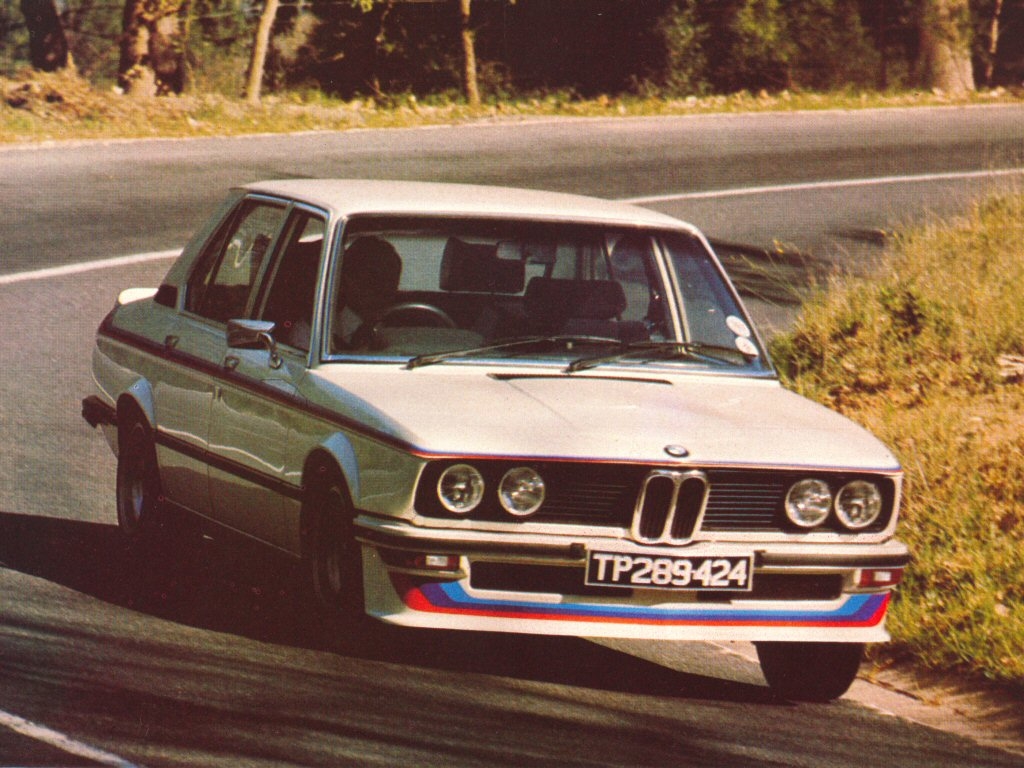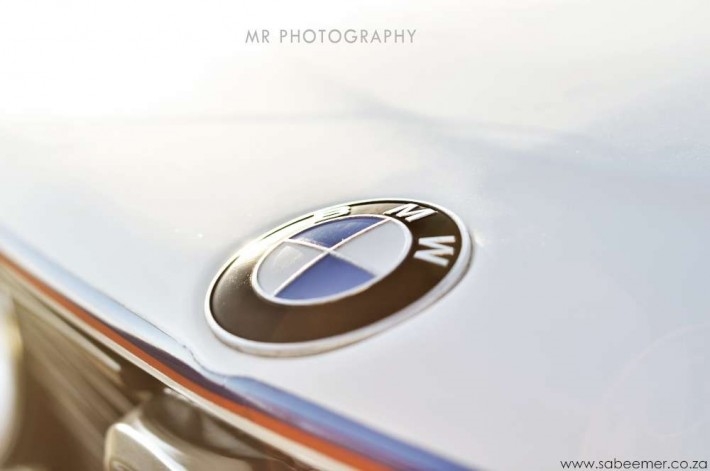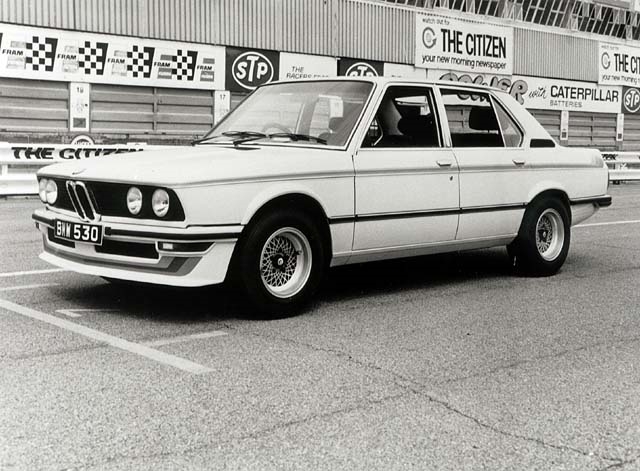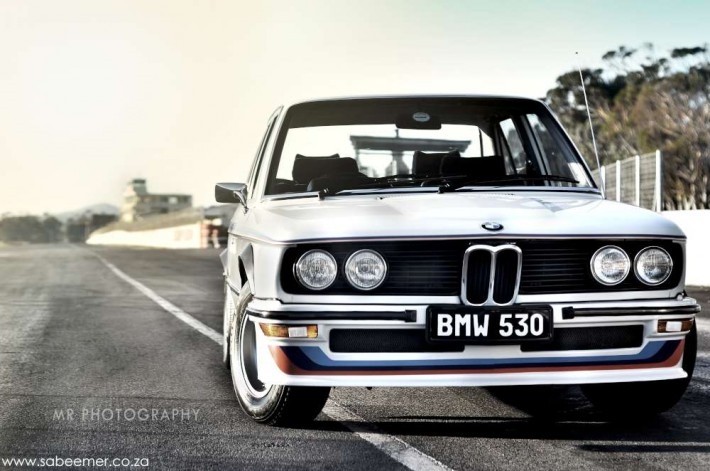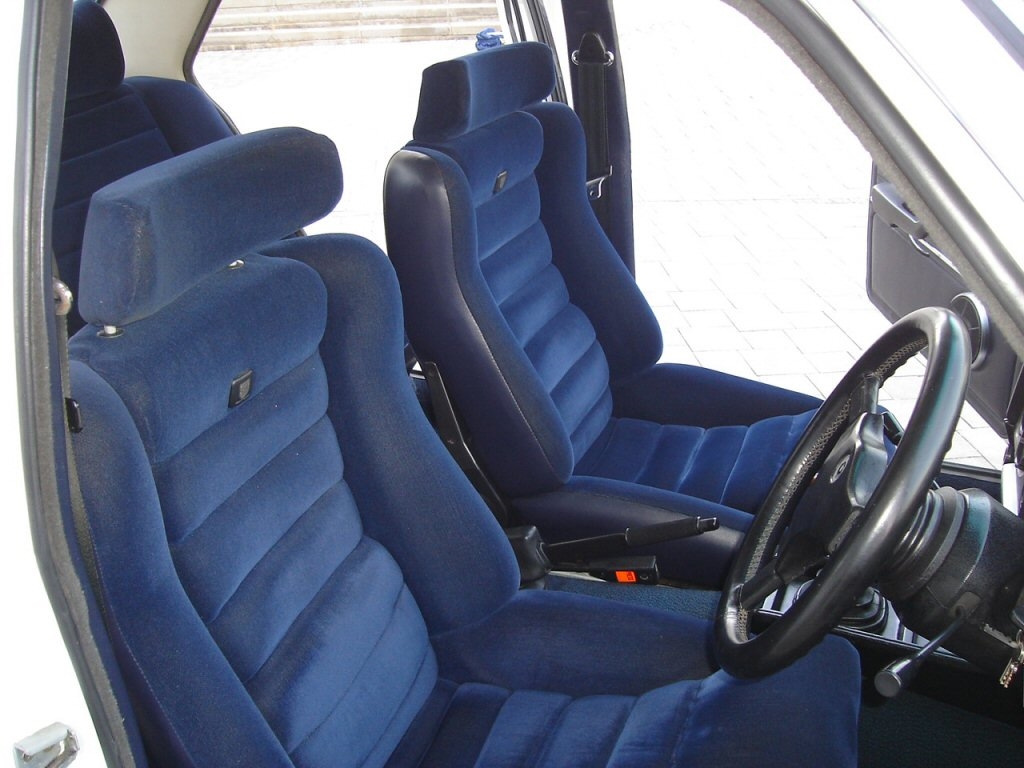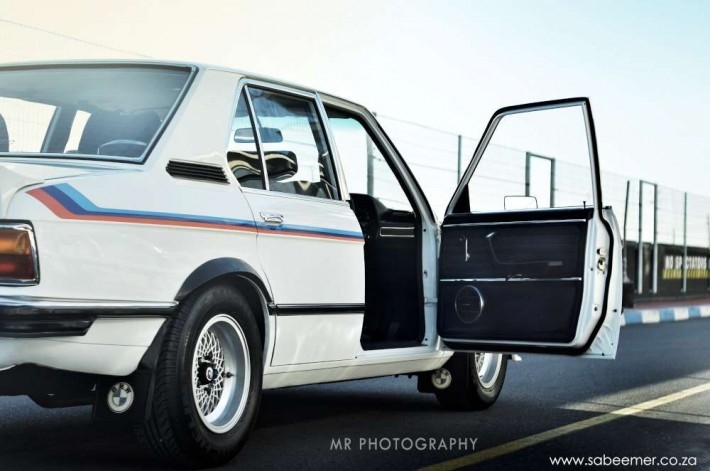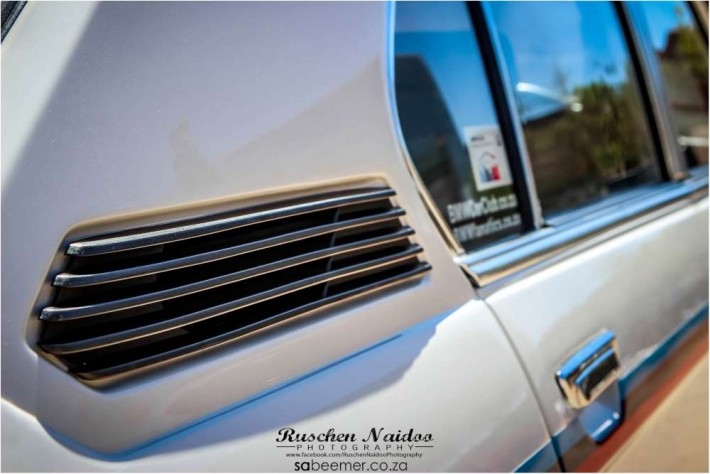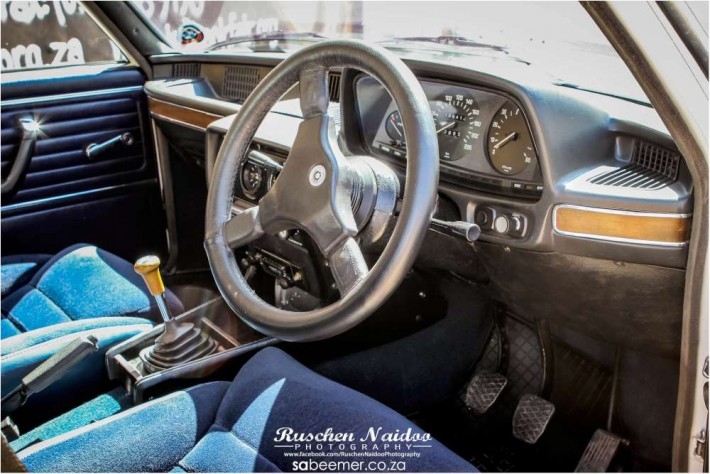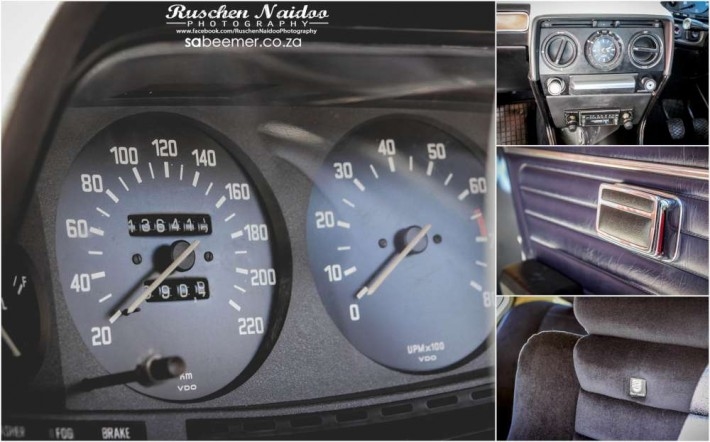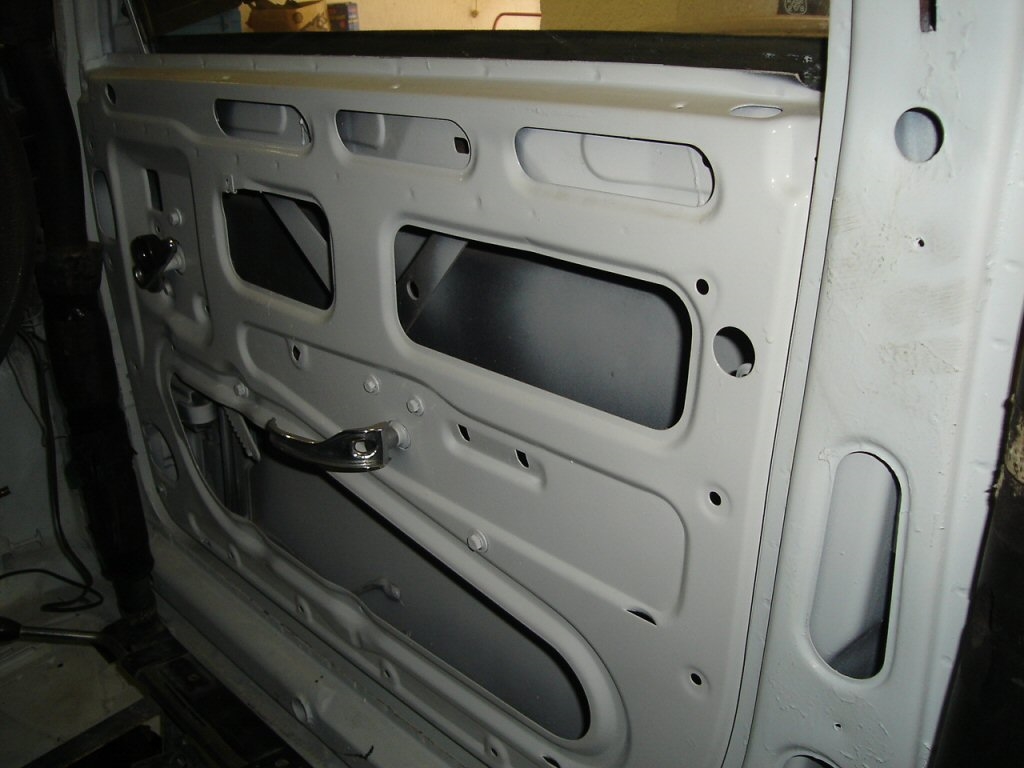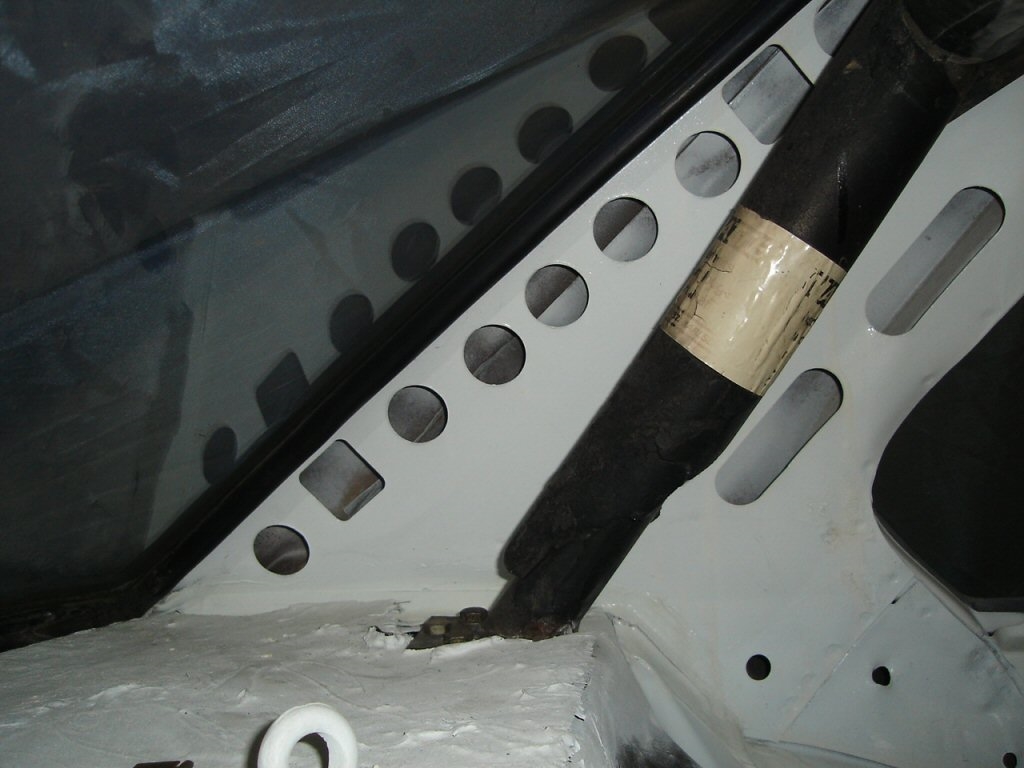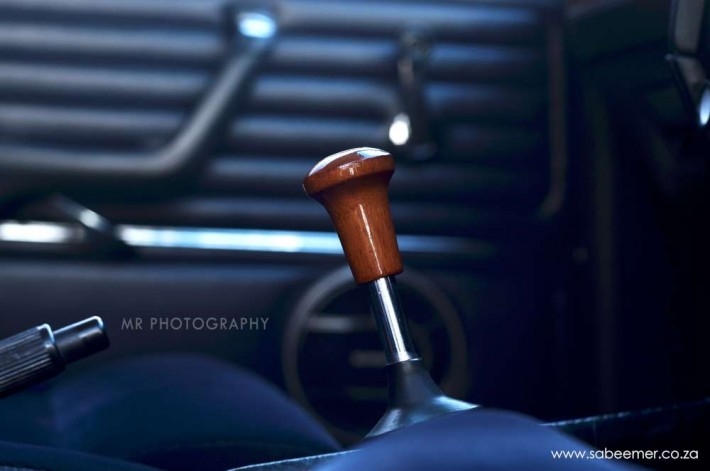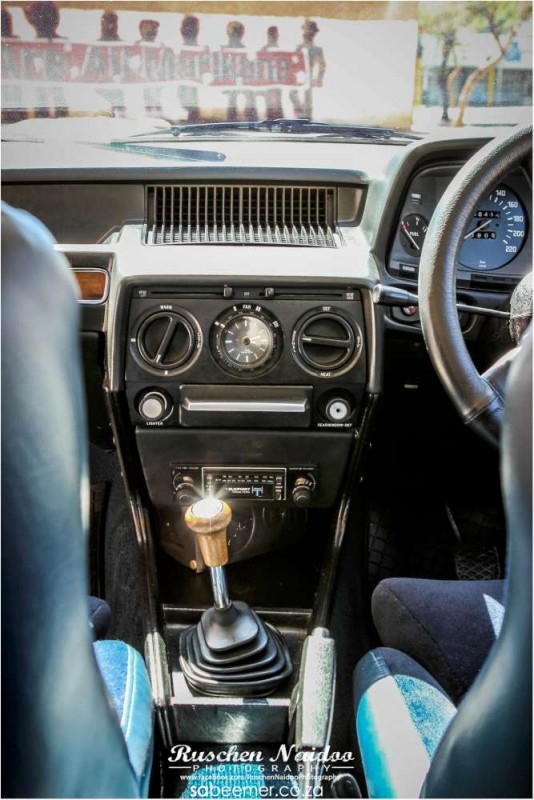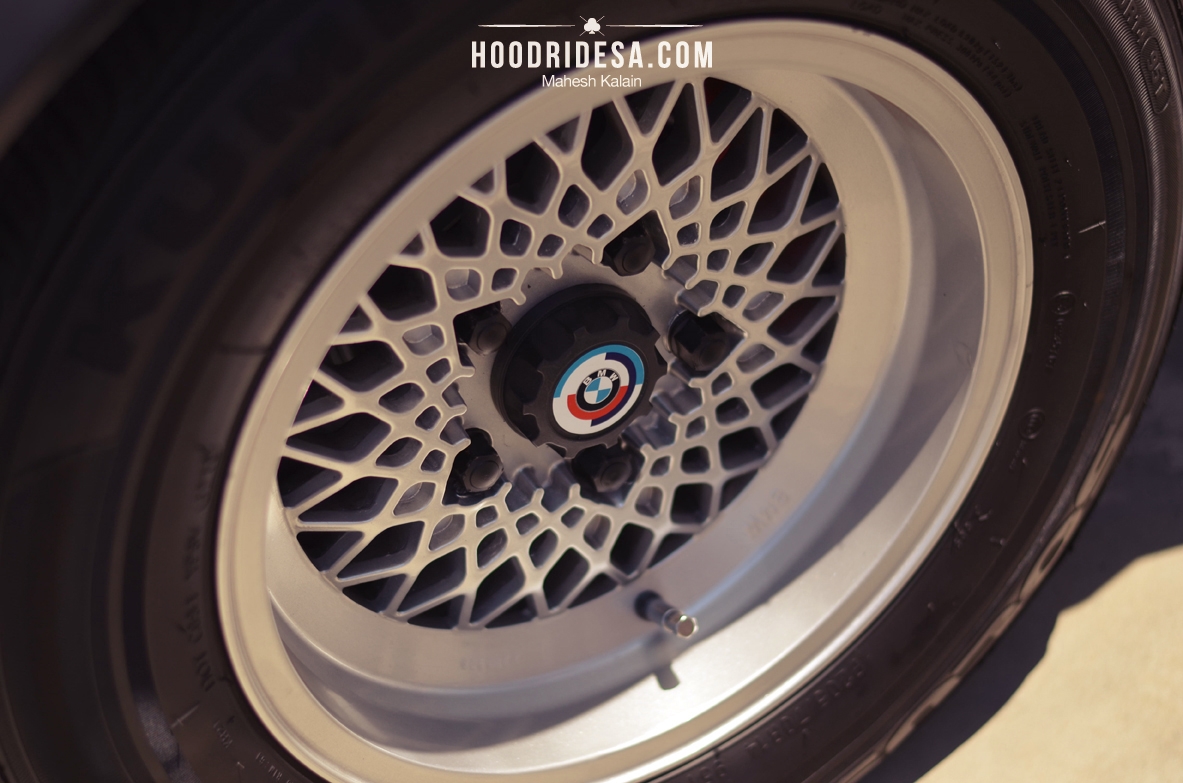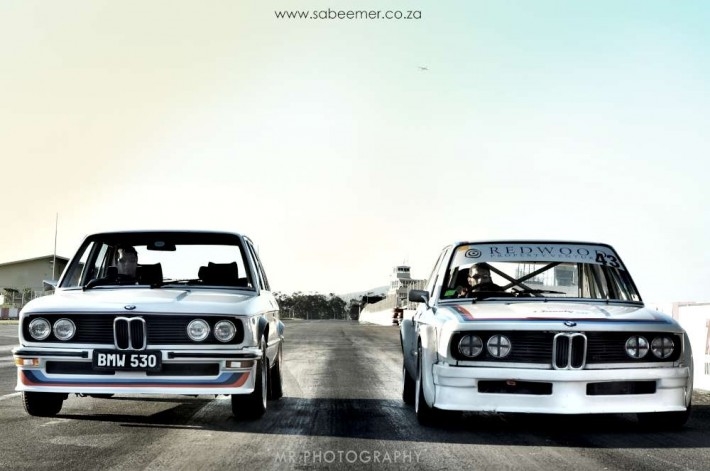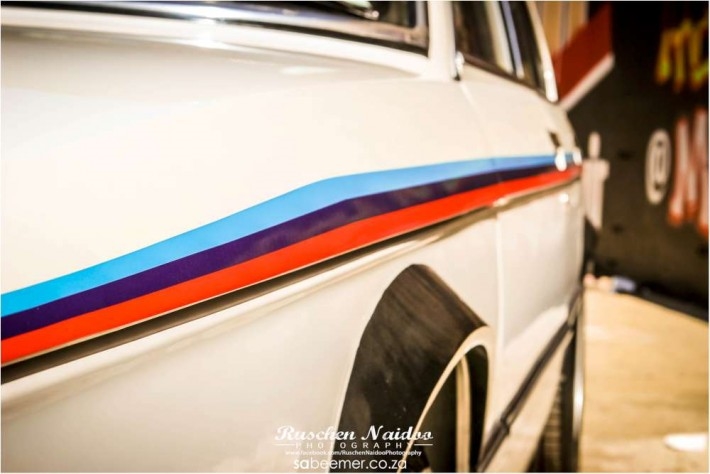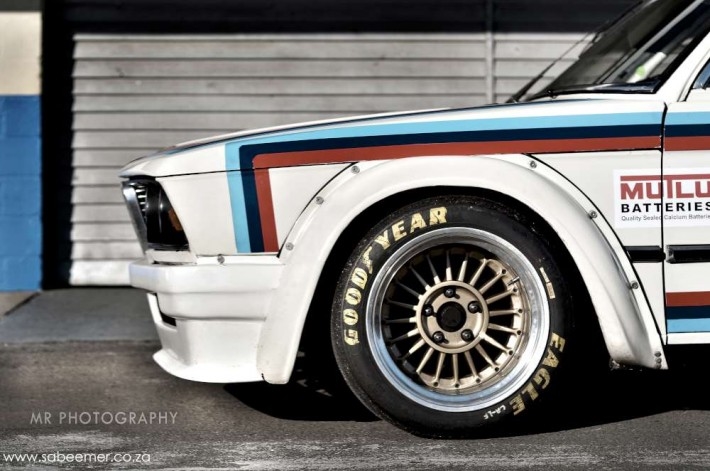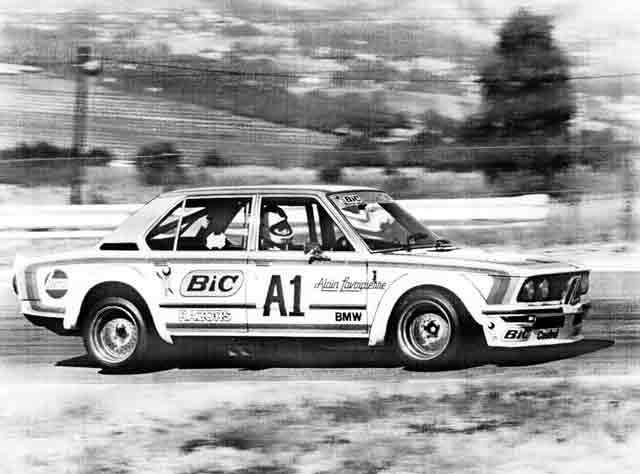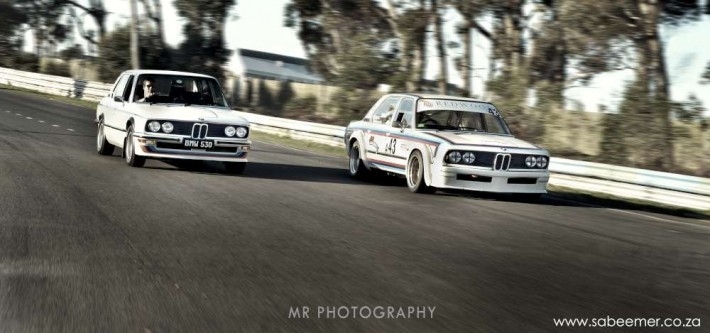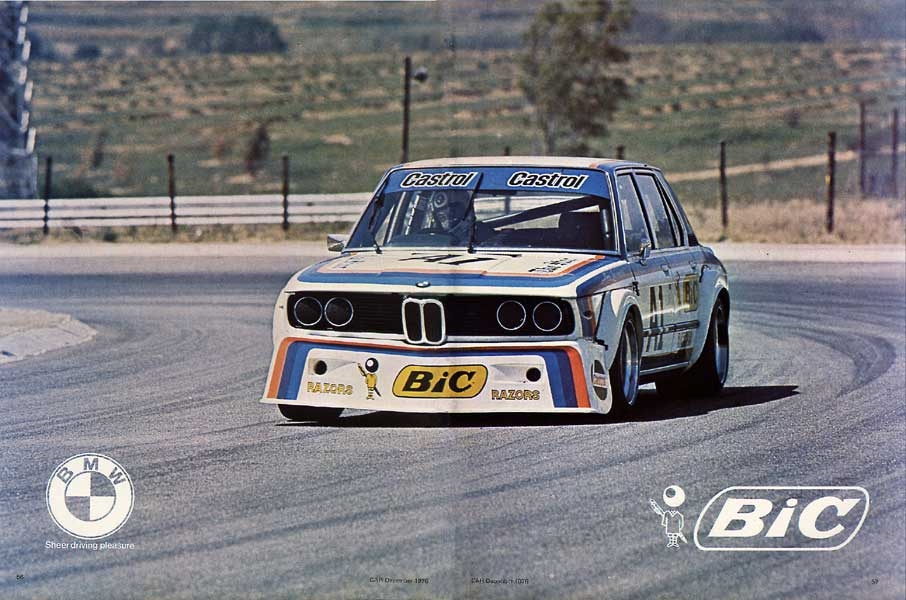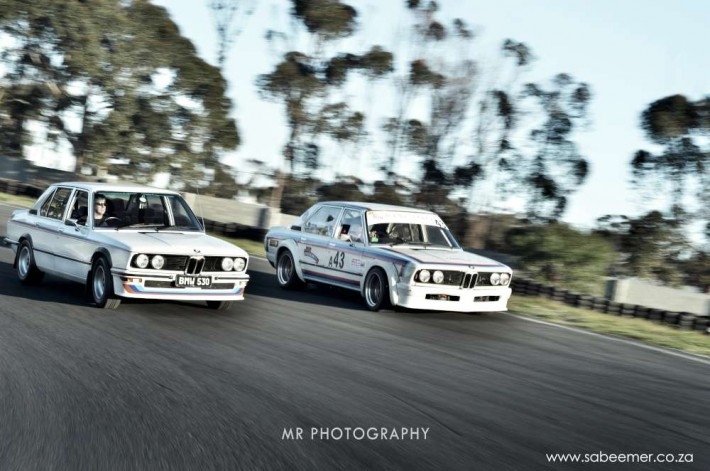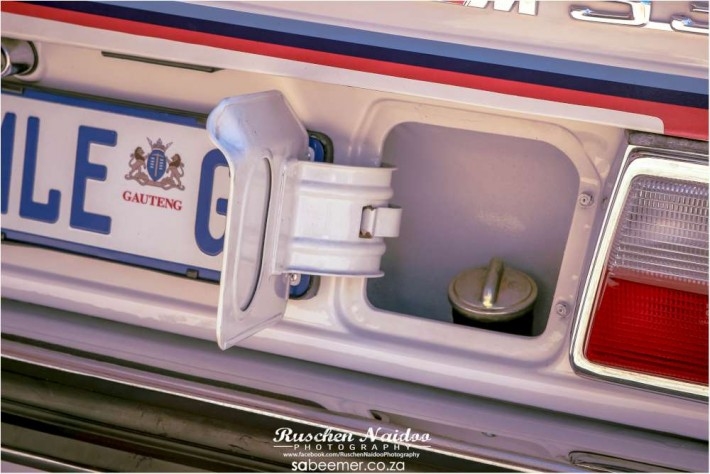 Synonymous with BMW is the infamous blue, purple, and red tricolor stripe of BMW M GmbH. Not only did these colors first appear in the 70’s, back when the same division of BMW AG was known as BMW Motorsport GmbH, but they represent more than just a pleasing array of colors. The blue represents BMW as a whole and the Bavarian roots of the company. The red represents Texaco, the American oil company which partnered with BMW Motorsport for the racing endeavors they were pursuing. Finally, the purple represents the melding of both groups to create a single blended racing unit.
Synonymous with BMW is the infamous blue, purple, and red tricolor stripe of BMW M GmbH. Not only did these colors first appear in the 70’s, back when the same division of BMW AG was known as BMW Motorsport GmbH, but they represent more than just a pleasing array of colors. The blue represents BMW as a whole and the Bavarian roots of the company. The red represents Texaco, the American oil company which partnered with BMW Motorsport for the racing endeavors they were pursuing. Finally, the purple represents the melding of both groups to create a single blended racing unit.
For many enthusiasts, these colors are most linked to the early BMW Motorsport E9 CSL which was so commonly seen leaping over crests of the Nürburgring and tearing up the competition of the American IMSA GT championship of 1975. The massive fender flares, exaggerated air dam, protruding rear spoiler and generally outrageous “Batmobile” appearance perfectly adorned the striping of the newly formalized Motorsport division.

The initial group of 8 people from BMW Motorsport GmbH was formed to focus on BMW’s racing program, and was responsible for creating the inaugural BMW Motorsport vehicle; the 3.0CSL (Coupe Sport Lightweight). Road going versions of the 3.0CSL were built to meet homologation requirements for racing, and these cars were as close as one could get to the likes of drivers Hans-Joachim Stuck, Chris Amon, and Dieter Quester (later Sam Posey, Brian Redman and Ronnie Peterson). The new team and racing colors were virtually unbeatable, winning the Touring Car Grand Prix at the Nürburgring in their very first attempt, and going on to win six European Touring car championships in seven years.

This motorsport “dekor” was also utilized on the 2002 Turbo of 1973 and 1974. With the 3.0CSL, these cars are probably the two most well-known applications of the motorsport stripes.
Interestingly, these stripes were also used on another road-going BMW of the 70’s, the BMW E12 530 Motorsport Limited Edition. The story of this car is all but forgotten in America, yet is part of an additional chapter of BMW’s racing history. BMW of South Africa received this unique machine, and still holds the tale of its conception.
South Africa has been a unique automotive market, and a thriving community for automotive manufacturing. Because of this, there is currently a following for all of the major automotive manufacturers, including BMW, Toyota, Mercedes, Volkswagen, and Renault. In particular, there is a rather large following of BMW enthusiasts, and proof of this is the large range of models offered by BMW Motorsport. Sporty South African-specific models such as the E23 M745i, E30 333i, and the Alpina powered E30 325is (All offered in RHD of course) are almost cult cars to many in North America, but rather well known to South African natives. BMW roots in South Africa started back in the late 60’s with the offering of GLAS based BMW’s such as the 1800 GL, 2000 GL, 1804 and 2004 models (more interesting, look up the BMW Cheetah).
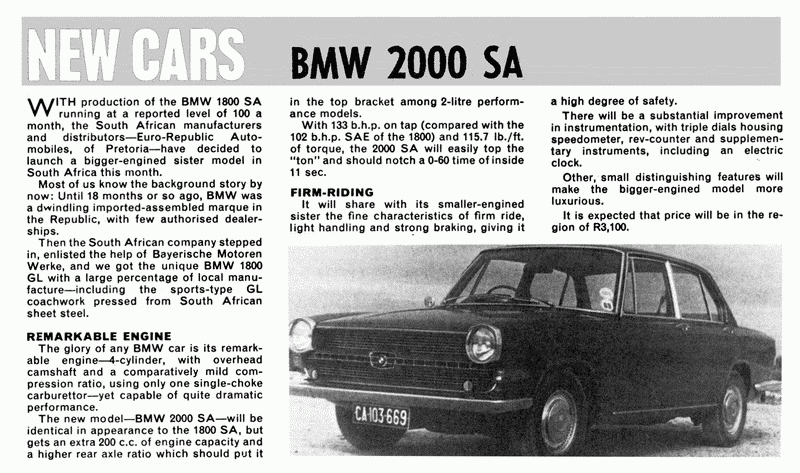
For BMW AG, 1971 sales were slow for the E3 saloons, and BMW began to think seriously about the viability of their South African operations. After much consideration, the decision was made to continue, and in March 1974 the new E12 5 Series was launched in S.A. even though E12 production had already commenced in Germany back in 1972. The factory in South Africa (formerly Praetor Monteerders) became the first BMW plant established outside of Germany in 1975, and one can recognize this origin by vehicle VIN: ABM… (African Bavarian Motorworks) instead of WBA… (Western Germany Bavarian Motorworks).
BMW’s gamble to persevere ended up paying off; and sales were on the rise as South Africans took to the 5 Series with great enthusiasm. An experimental 528 manual (previously only offered in automatic) shown in a Swaziland car show created a bit of a buzz. At the time, import restrictions were very harsh, and BMW’s popular “sport sedans” were a dream for most. The lack of exotic sports cars aroused the interest of the racing fraternity, who saw this as the opportunity to establish BMW as a motorsport force to be reckoned with in South Africa.
Negotiations were entered into with BMW Motorsport in Germany for the creation of a modified production racer. The go-ahead was given almost immediately under the famous direction of Jochen Neerpasch, with technical supervision by Peter Stark.
An E12 525 concept car was produced, and this prototype car found its’ way to the brothers Schnitzer in Freilassing, who ultimately were responsible for much of the development work. Two track cars were prepared, one in Germany and the other in South Africa; the goal being to compete in the “Star Modified Production Series,” at the time, the most prestigious saloon car racing series in the country.

Pictured above is the prototype BMW Turbo, the completed German race car and a newly finished road-going car of the proposed design at Kyalami race track in 1976. This car became known as the 530 Motorsport Limited Edition, and unbelievably, became the first and only BMW Motorsport purposed BMW 5 series ever produced! It came out of South Africa in 1976, about four years before the famous M1.
The BMW 530 MLE had a special position in BMW South Africa’s model range. It was a spin-off product of the BMW Motorsport GmbH, and had engine modifications performed by Paul “Camshaft” Rosche, who was a basis of the BMW M10 engine development of the 02 series cars, and BMW Motorsport engine development as a whole (going on to develop the powerful BMW M12/M13 engines, S14, and the 6.1L McLaren F1 V12).
The car was a light weight version of the 525, with many modifications to reduce weight. All windows were hand-crank as standard, and air conditioning was never offered. The interior was fitted with Scheel seats made of lightweight materials, finished in blue upholstery (reminiscent of the seats used in the 3.0CSL). The rear bench seat had a foam base instead of the conventional steel frame, no doubt another attempt at weight reduction.
No power steering or air conditioning was available, and amenities such as power windows and sound-deadening were also excluded to drop an additional 100kg (220 lbs). The windows, except the windshield, were made of thinner glass to further drop the overall vehicle weight.
A special 380mm diameter Motor Sport steering wheel produced by Italvolanti rounded out the sports-orientated cabin. The racing origins of the car are clearly visible in the vintage BMW Motorpsort GmbH ” Cloisonne” badge adorning the steering wheel.
To make them true lightweights, the body was fabricated using lighter gauge steel, with punched holes in many areas of the body, drilled trunk lid hinges and, oddly, one of the foot pedals was also drilled. In addition, the battery was moved to a crudely fabricated cut out in the trunk floor to create better weight distribution.
The 2985cc six cylinder overhead cam motor was a factory tweaked version of the same motor found in the 3.0CS and 3.0Si, producing a higher 147kw (197hp) at 6000rpm and 277Nm (204ft-lb) of torque at 4300rpm; about 15kW (20hp) more than before! Fuel and air were delivered via two twin-choke Zenith 38/40 INAT down-draught carburetors and a truly huge air filter system.
Besides a special cam and competition flywheel, an oil cooling system was also fitted neatly behind the front spoiler. This set-up enabled the car to pull cleanly in fifth gear, and thus provided the 530s with a nice blend of bottom-end flexibility matched with top-end performance.
Top speed was 208kph (129mph) with 0-100kph coming up in 9.3 seconds. Quite lackluster by today’s standards, but very impressive back in 1976. The motor was mated to a Getrag 5-Speed close ratio gearbox with first gear at a dogleg away from the driver. A once-off wooden gear knob, never seen before or since on any other BMW, displayed the dogleg gear insignia.
The rear end was transformed with the addition of a Borg Warner limited slip diff, with Bilstein gas dampers and uprated springs all round, as well as an uprated anti-roll bar up front and an additional anti-roll device at the rear. Four-piston brake calipers and ventilated discs provided the stopping power. This whole package rode on special BBS Mahle 7J alloys and 195/HR 14 inch tires.
To further enhance the appearance, the BMW Motorsport colors hugged the waistline and the two spoilers. In appearance alone, the cars stood out from the crowd.
The first 110 cars were all painted in Ice White (The second batch of 108 cars were also available in Platinum or Saphire Blue) with a deep front spoiler, aggressive trunk lid spoiler, and shapely fender flares made of black plastic (the race cars, fiberglass). Very early models were color matched to the car, with later ones being left in their natural black finish.
There was one more hurdle to overcome before the two race cars could be unleashed on South Africa’s racetracks. Requirements for the local touring car championships required at least one hundred of these cars to be sold in South Africa for homologation of the racing version (just like had been done for the 3.0CSL). This appeared to be a daunting task since the countrywide speed limit was only 90km/h (56mph), and the powerful MLE cost double the price of a standard BMW E12 520.

To BMW S.A.’s surprise, the 100 homologated road-going 530s were quickly snapped up by the enthusiastic public– so quickly in fact, that BMW S.A. decided to produce an additional amount to satisfy demand. Final production figures amounted to 218 cars, of which the first two were the track cars. Interestingly, the car that was modified in Germany (above), had no VIN (see pictures at SA-VIN-Registry), leaving 217 VINs given to the BMW 530 MLE. In retrospect, the overwhelming demand was not so surprising. These cars were strikingly different to anything BMW S.A. had previously offered. At almost 10 595,00 South-African Rand in 1976, one got a massively capable vehicle for the time.
BMW produced proof of these sales just in time for the Republic Day Trophy race. The Republic Day Trophy race on June 5, 1976 saw the beginning of the E12 racing legend in South Africa. With these race cars, BMW gave the real thing to the eager South African public; high performance production cars with genuine racing pedigrees.
The racing engines produced an impressive 202 kw (271hp) at 6750 rpm with 318 N.m (234ft-lb) peak torque at 5500 rpm, and a maximum fifth-gear speed of 235 kph (146mph). The final drive ratio was 3.45 :1 (same as the road going car), and final weight came to 1230kg (2700lbs) in race trim. Estimates of 0-60kph times were just over 7 seconds.
To keep this beast on the track, Bilstein gas dampers were supplied all round, anti-roll bars were fitted front and rear, and tandem brake boosters with release valves prevented rear brake-lock. Four up rated ventilated disc brakes by Lockheed provided assured stopping power. Two large exhaust pipes exited on the right side next to the driver’s door. Low profile Dunlop tires were fitted to 406 mm Chaparral wheels, 279 mm wide at the front and 305 mm wide at the rear, with 275/600 and 300/625 tires fitted respectively.
This powerful package was neatly tucked into an aggressive-looking E12 body with flared wheel arches and the brightly decorated BMW Motorsport colors. Strangely, the interior largely remained the same as on the road cars, including the rear bench, carpet, and door panels. Only the aggressive look and addition of a roll cage reminded the driver that this was indeed a serious race car.
The two BMW’s were unchallenged, with Eddie Keizan and Alain Lavoipierre, the initial two drivers, achieving all-conquering success. Track records were broken at regular intervals, and the opposing Mazda and Ford Capri challenges were vanquished. The 530 MLE’s went on winning three national championships back to back from 1976 to 1978. To really stamp their authority on the competition, fifteen victories were achieved from fifteen consecutive starts, with Keizan eventually moaning that his only competition was his teammate.
Keizan got what he asked for in 1978, when Mazda released their Capella Rotary Coupe. Immensely powerful, and wickedly quick, the Capellas provided stiff opposition from their first race. As the season wore on, the Capellas got ever closer to Keizan, eventually eclipsing the BMWs, and effectively ending their factory-backed racing careers. However, BMWs’ goal had been achieved. Over a period of two and a half seasons, and three consecutive championship titles, the 530’s had firmly established the BMW marque in South African motorsport circles, and started a tradition that is still very much alive today. Eddie Keizan, the driver so instrumental in the car’s track success, claimed that, 12-inch wide wheels and racing slicks apart, the racing car was almost identical to the road version. He also described the cars as the best racers he had ever driven, citing in particular the handling capabilities. High praise from a driver who had Formula 1 experience under his belt.
So what makes the 530 MLE so special, after all it is just an E12 with a few badges, right? Not quite.
Although it may have been in the motorsport spotlight a short while, the on track success has never been equaled by any other 5 Series to date. It was the first production 5 Series graced by the expertise of the BMW Motorsport division, the same group that created a storied lineage of sporting BMW’s. It was the first race-bred 5 series to be officially available to the public, and the the first official BMW Motorsport factory-backed saloon car racing team in the world. Furthermore, it has remained to this day, the most successful 5 Series racer.
Although the basic production 5 Series was never intended for the track, these homologation specials were specifically designed for that sole purpose. Paul Rosche’s engine work and the Schnitzer brother’s expertise in its development give it further credence. In fact, British author Jeremy Walton, in his book “Unbeatable BMW,” describes these cars as the closest to works 5 Series there have ever been. It is certain that the road versions were a direct development of the track cars, making them carry a unique racing pedigree. They were seriously special cars, mostly produced by special teams of engineers, and raced by special individuals.
It is also certain that the 530 MLE was BMW’s first serious venture into a sporting 5 Series, and ultimately culminated in the birth of the E12 M535i four years later – the first production BMW Motorsport designated vehicle not built because of racing homologation. The major difference between the two, was that the E12 M535i was designed for the road first, unlike the 530MLE, which was designed first and foremost to go racing. This does make the MLE a far more raw car, almost no creature comforts, and some find that more desirable.
Towards the end of 1976, the now famous 530MLE cosmetics found their way as optional extras on the equally rare German-only 533i, and later still, again as extras, on the legendary E12 M535i. But the MLE has remained the only 5 Series ever produced to wear the BMW motorsport cosmetics and color scheme as standard equipment. Although the BMW Motorsport exterior theme of the time (as also found on the 2002 Turbo and 3.0CSL) was found on newer models, eventually evolving with a natural progression, its official 5 Series origin lies in the South African Built 530MLE.
Due to the horrors of the apartheid era in South Africa at the time, this all-conquering success was not as well known and publicized as the European 3.0CSL’s of the time. Oddly though, despite the racial segregation, South Africa still had a very rich racing calendar in those days, with many international events and personalities attending. All of the world’s top drivers raced there, and the destination was one of the most popular for Formula One. As a result, the 530MLE’s were pretty well known back then, but only really in the racing community.

Today, the 530 is experiencing a resurgence of interest. For a long time forgotten, even among racing enthusiasts, it has now become a hot collectable, even outside of South Africa. This has pushed the values up significantly, and led to a number of special cars finding new homes overseas. This trend seems to be increasing, with the MLE no longer really forgotten, but actually quite well known.
There is obviously no certainty as to how many of the 218 cars produced have survived. However, due to their nature to disintegrate into rust, there can surely only be a few still around. No more than 15 are said to exist today, yet these cars are all that remain of a very exciting and important period in BMW racing history. Never again would BMW produce a production 5 Series for the public that had its origins so close to the track, and never again did BMW use the motorsport stripes as standard on a production vehicle.
Other Notes:
The term “530MLE”, which is used here, is the name which these cars are most often referred to by enthusiasts over the past three decades. However, they have also been described as Motorsport 530, 530 Motorsport, 530 Limited Edition, and simply 530 by local publications. BMW S.A. itself only ever referred to the cars as 530, but did state they were of a limited production. There was not even a special owner’s hand book, the standard E12 book merely used. The use of the “M” emblem for Motorsport-derived cars was first officially used by BMW with the M1, although the 530 MLE was a product of the BMW M division, using the inaugural motorsport logo, and the German modifications of Rosche and the Schnitzer brothers.
While every effort has been made to render as accurate as possible details regarding the history of these cars, inaccuracies may have occurred.
Sources:
http://www.bmwfanatics.co.za/showthread.php?tid=34318
http://www.firstfives.org/530MLEstory.html
http://e12.de/palette/za/02a70l20.htm
http://www.africanmusclecars.com/index.php/80-south-african-muscle-cars/bmw
http://classicandvintagebmw.tumblr.com/e12530mle
http://www.bmwfanatics.co.za/showthread.php?tid=18113
http://www.africanmusclecars.com/index.php/bmw/530-mle-e12
http://www.bmw-driver.net/forum/showthread.php?t=31810
http://www.e12.de/primary/01001l20.htm
Latest posts by Tom Schultz test #2 (see all)
- 2024 Durango Event - 24 February, 2024
- Drive 4 Corners 2022 Low-Key Event Concluded - 1 September, 2022
- Drive 4 Corners 2022 Informal Event Planned! - 6 June, 2022




